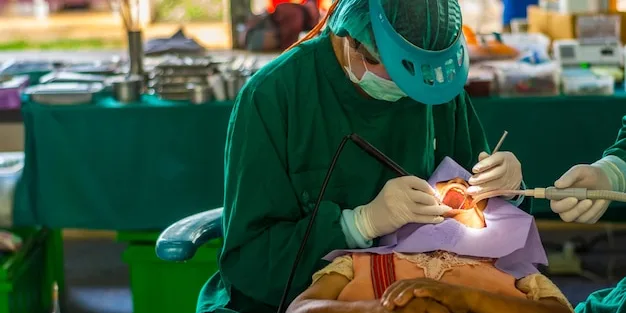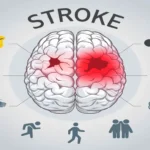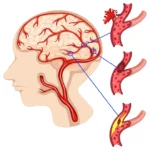Living with Chronic Neurological Pain? Here’s What You Can Do
Chronic neurological pain isn’t just physical—it’s emotional, mental, and deeply personal. It can rob you of your sleep, your independence, and even your joy. Whether it’s constant burning, sharp shooting pain, or mysterious numbness, nerve pain is unlike any other.
In Bangladesh, thousands suffer silently due to a lack of awareness or fear of complex treatments. But there’s good news: modern neurological pain treatment in Dhaka is more advanced and accessible than ever before—especially under the expert care of Professor Dr. Md. Shafiul Alam.
Let’s explore what causes chronic nerve pain, how to manage it, and the safe, effective solutions now available—without jumping straight to surgery.
What Causes Chronic Neurological Pain?
Neurological pain occurs when the nerves or brain’s pain pathways are damaged or disrupted. Common causes include:
- Spinal disc problems – such as PLID, spinal stenosis, or nerve root compression
- Trauma or surgery – nerve injury after accidents or operations
- Stroke – central post-stroke pain due to brain signal interference
- Diabetes – diabetic neuropathy causing burning or numbness in the limbs
- Tumors or inflammation – pressing on nerve structures
- Autoimmune diseases – like multiple sclerosis
Unlike muscle pain, nerve pain often persists for months or years and can worsen without the right intervention.
Symptoms You Shouldn’t Ignore
Neurological pain feels very different from other types of pain. Warning signs include:
- Burning, stabbing, or electric shock-like pain
- Tingling or numbness in hands, feet, or face
- Muscle weakness or heaviness in limbs
- Oversensitivity to touch, even light contact
- Pain that worsens at night or disrupts sleep
- Loss of balance or coordination
If these symptoms are persistent or spreading, it’s time to see a neurosurgeon in Dhaka for a proper evaluation.
Diagnosis – How a Neurosurgeon Identifies the Source
Professor Dr. Md. Shafiul Alam begins with a comprehensive diagnostic process, which includes:
- Detailed patient history – identifying triggers, timelines, and pain patterns
- Neurological examination – reflexes, strength, sensation, coordination
- Imaging – MRI or CT scans to detect disc herniation, tumors, or spinal issues
- Electromyography (EMG) and nerve conduction studies (NCV) – to assess nerve function
This multi-angle approach ensures accurate diagnosis and treatment tailored to the patient—not a one-size-fits-all approach.
Non-Surgical Nerve Pain Solutions
Surgery is not always the answer. In fact, most patients improve significantly with conservative, non-invasive treatments such as:
- Medication Therapy
- Nerve-stabilizing agents (e.g., pregabalin, gabapentin)
- Antidepressants (e.g., amitriptyline for nerve pain control)
- Anti-inflammatory drugs
- Topical treatments or pain-relief patches
- Physical & Neuromuscular Therapy
- Targeted physiotherapy to decompress nerves
- Stretching and strengthening to correct posture
- Electrical stimulation (TENS therapy) for pain reduction
- Nerve Block Injections & Spinal Injections
- Corticosteroids or anesthetics delivered near affected nerves
- Reduces inflammation and improves mobility
- Lifestyle and Ergonomic Modifications
- Avoiding heavy lifting or prolonged sitting
- Posture correction at workstations
- Weight management and blood sugar control (for diabetics)
Dr. Alam always begins with non-surgical strategies, focusing on long-term relief and nerve healing.
When Is Surgery Needed for Chronic Nerve Pain?
Surgery is considered when:
- Pain persists despite 8–12 weeks of therapy and medications
- Imaging shows structural damage (e.g., herniated disc, spinal canal narrowing, tumor)
- Nerve compression is causing weakness or muscle loss
- Non-surgical approaches no longer provide relief
Surgical procedures performed by Professor Dr. Md. Shafiul Alam include:
- Microdiscectomy – for PLID or compressed nerve roots
- Spinal decompression – for narrowing spinal canals
- Tumor removal – to relieve nerve pressure
- Neurolysis – freeing nerves from scar tissue or adhesions
All procedures prioritize nerve preservation, minimal tissue disruption, and fast recovery.
Long-Term Management and Prevention
Nerve pain can be chronic—but it can also be managed and minimized with consistency and care. Long-term plans include:
- Regular physiotherapy
- Periodic medication reviews to avoid dependency
- Pain journals to track triggers and progress
- Psychological support for stress-induced pain
- Ongoing checkups with a specialist
Professor Dr. Shafiul Alam’s team works with patients not just to treat pain, but to rebuild a confident, independent lifestyle.
Why Choose Dr. Shafiul Alam for Neurological Pain Treatment in Dhaka
- Specialist in complex nerve pain and spine disorders
- 25+ years of neurosurgery and pain management experience
- Combines non-surgical and surgical treatments based on need—not guesswork
- Trusted by patients for clear communication and ethical care
- Provides individualized solutions, not generic prescriptions
Patients across Dhaka and Bangladesh trust him to turn long-term suffering into renewed mobility and relief.
FAQs About Chronic Nerve Pain
Q: Is chronic neurological pain permanent?
Not always. With early diagnosis and a proper plan, many patients achieve significant, lasting relief.
Q: Can nerve pain be cured without surgery?
Yes. Many cases respond well to medication, physiotherapy, and nerve block treatments.
Q: What’s the best treatment for nerve pain in Dhaka?
It depends on the cause. Dr. Shafiul Alam offers both advanced diagnostics and world-class treatment options for accurate care.
Explore More Expert Resources
Looking to Learn More?
Don’t let chronic pain define your life. Explore treatment, reclaim strength, and trust the experts:





